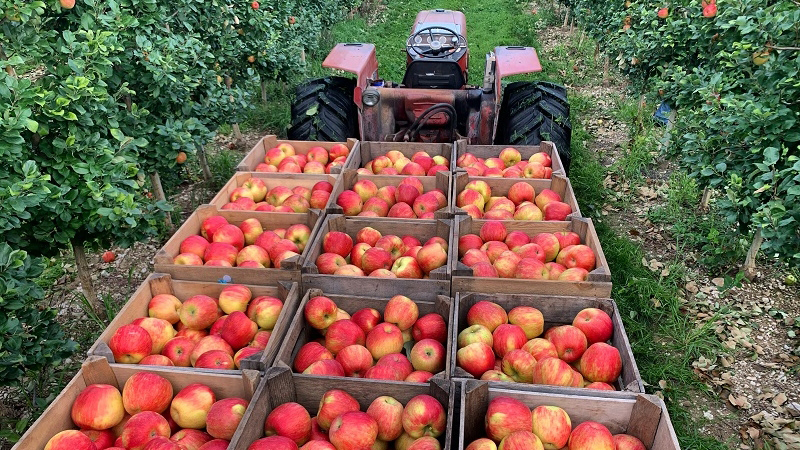Establishing Wildflower Habitat To Support Highbush Blueberries
Highbush blueberries rely on bee pollinations to set a good crop. One strategy some Michigan blueberry growers have begun using to support crop pollinators on farms is planting wildflower strips or meadows near crop fields.

Wildflower planting to support bees on a Michigan blueberry farm. (Photo Credit: Emily May)
Research from Michigan State University (MSU) has shown that growers can increase pollination and yield of blueberry by planting wildflowers that support wild bees, like bumble bees, and as well as honeybees. These plantings have the added benefit of supporting natural enemies and the biological control services they provide without increasing insect pests, according to additional MSU research.
However, planting wildflowers isn’t as simple as sowing seeds into a patch of ground and watching them grow. Like any crop field or garden, wildflower habitat requires careful site selection, preparation, and maintenance to control weeds.
Site Selection
Choose a sunny site that is protected from spray drift. The soil nutrient and moisture conditions need to be suitable for wildflowers. While these plantings are typically located on land that isn’t otherwise suitable for fruit production, it’s not worth the cost and effort to plant them in nutrient-poor or extremely dry or wet soils.
Site Preparation And Seeding
Converting a field edge, old field, or grassy area to a wildflower planting requires a full season of weed control prior to seeding. The spring before planting, burn or mow to cut back on existing vegetation. Cultivate the soil and apply a non-persistent herbicide such as glyphosate in spring, mid-summer, and early fall.
Organic growers can use solarization or other non-chemical methods to control these weeds. Before seeding in late fall or early spring, lightly disc or harrow to loosen the topsoil. The seedbed should be as bare as possible prior to seeding. Seed a mix of native wildflowers suited to the site conditions that will bloom continuously through the growing season. Tamp or roll the soil after seeding to ensure good seed-soil contact.
Weed Control After Planting
In the first year, mow the vegetation to a height of 6 to 8 inches every couple of weeks. Most perennial wildflowers will not grow taller than this in their first year, so regular mowing will help prevent weeds from going to seed. Make sure to set the mower higher than lawn height.
In the second year, mow in early spring and rake off the cuttings. To avoid damaging wildflowers, do not mow after late spring when vegetation has reached a foot or higher. Consider spot-spraying and reseeding problem areas.
A little effort and patience will pay dividends. With proper early weed control, plantings require little management after their second year aside from an occasional burn to remove thatch. A well-managed wildflower planting will improve and continue to bloom year after year, supporting crop pollinators, improving pollination and yield, and providing important resources for other beneficial insects.









